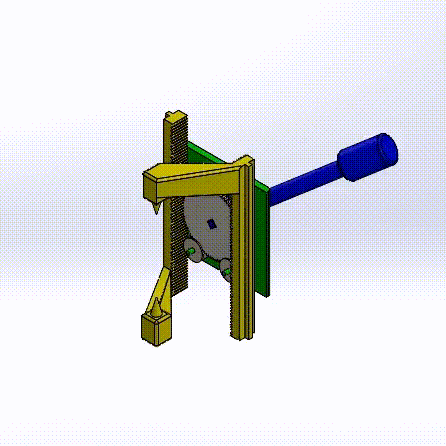Automatic Can Opener / Dispenser
Electrical Engineering, Northeastern University
Relevant Skills: finite element analysis, fatigue analysis, connection analysis, product design and development
Objective
Develop a consumer device with an electronic drivetrain to solve a real-world problem.
Variables / Constraints
The design had to bear considerable load in order for FEA analysis to be conducted. Further, DFM practices has to be incorporated.
Design Process
[1] After brainstorming common issues that we could solve, I suggested a device to automatically open a soda can and allow the contents to be dispensed. The device would be particularly helpful for individuals with dexterity issues. After researching mechanisms to actuate the can tab, we opted to use a double rack and pinion system to puncture the can instead. I developed the CAD and a 3D printed prototype for our initial design proposal.

3D printed initial prototype

Double rack and pinion motion

Low-fi render of initial design
[2] To test the first prototype, static structural, buckling, and fatigue failure were performed via FEA simulation and hand calculations. Necessary changes were made to the materials and dimensions of each part before I added fastening hardware to the model. The analysis process was then repeated for each fastener. I performed all FEA simulations and assisted in hand calculations as well.

Example of torque analysis on square shaft

Example of buckling analysis on device stand
[3] Based on the results of the analyses, I made necessary changes to the CAD, including a retaining ring to prevent the can from moving upwards, indents to allow for screw insertion, and thickening the areas around tapped holes. I also researched and integrated a small stepper motor into the design, and coupled it with a torque increasing gear train. Lastly, I added clear plastic features to protect users from the gears and isolate the motor from the liquid and can.

Isometric front view of final assembly showing can retainer and plastic electronics guard

Isometric back view showing gearing and gearbox cover
Solution
A final 3D printed prototype was constructed and presented along with the various failure analyses. The end result was a numerically justified, manufacturable design that, if constructed from recommended materials, would be a hands-free way to open and dispense a canned beverage.

Final 3D printed prototype

Device operation: excerpt from final project presentation slides
